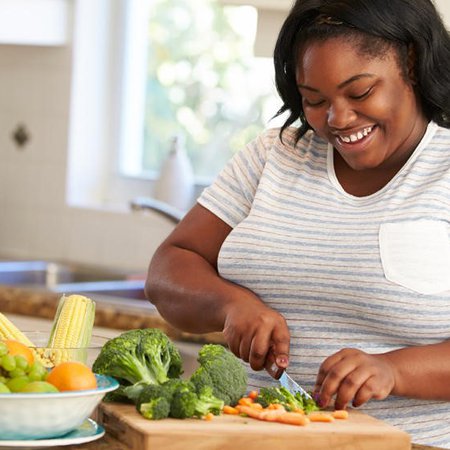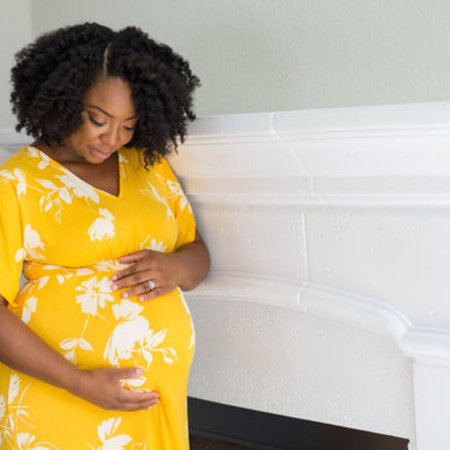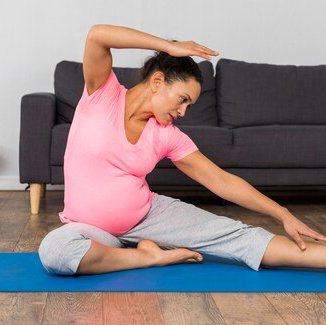
Your Pregnancy Journey
Your Pregnancy Journey
Lauretta S./ Stacey A.
July 13, 2022
Lauretta S./ Stacey A.
July 13, 2022
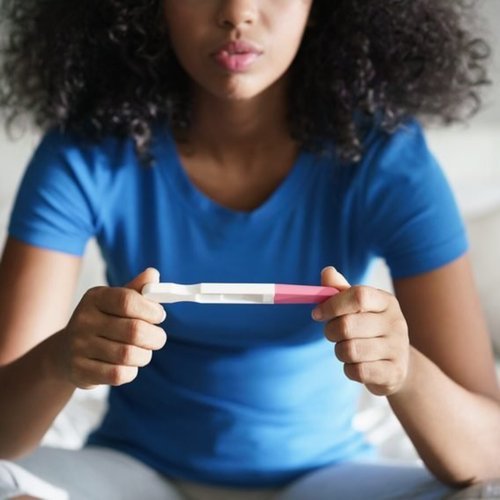
You just got a positive pregnancy test result, probably from an at-home test kit, and are probably wondering what next.
Did you know that pregnancy lasts on average 40 – 42 Weeks and this is further broken down into 3 main stages called Trimesters; the First Trimester is from 2 – 13 Weeks, the Second from 14 – 27 Weeks, and the Third from 28 - 40/42 Weeks?
Your body and baby undergo various forms of change and growth respectively during this period. At 37 full weeks, a baby is considered full term and can survive when born with little to no complications.
Let’s take a look at the various Trimesters and a little of what to expect at each stage.
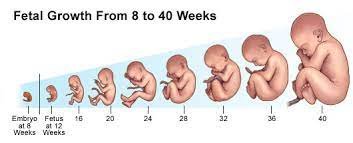
First Trimester
The first trimester is the earliest phase of pregnancy. It starts on the first day of your last period -- before you're even actually pregnant -- and lasts until the end of the 13th week. This is a crucial phase in your baby’s development. From weeks 1 to 8, your baby begins to take a human form. The heart, and neural tube which later becomes the brain, nose, ears, and mouth begin to develop. Between weeks 8 to 13, the arms, fingers, legs, and feet are beginning to take shape. All vital organs including the sex organs begin to develop in this trimester.
It is important to report to your doctor as soon as you find out or suspect you are pregnant and start taking prenatal vitamins, especially Folic Acid – this is necessary to support the proper development of your baby’s brain. Stay away from toxic substances, drugs and alcohol as this can negatively affect your developing baby.
By the end of your first trimester, your baby is about 6 – 7.5 cm long and weighs on average 23grams, able to move, make a fist, and move its other limbs.
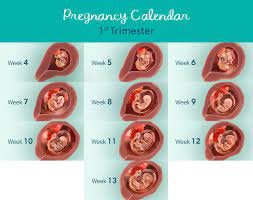
photo credit: Pampers.com
Your body goes through a lot of changes too, from fatigue, morning sickness, sore and tender breasts, food aversions, etc. The good news is all these are likely to go away by the end of the first trimester. This is a great time to start a prenatal supplement, especially Folic acid, eat as healthy as possible and get enough rest.
Second Trimester
You start to feel a lot better as you enter your second trimester (weeks 14 to 27) with less nausea and fatigue. Your baby’s senses and taste buds start developing and they are able to sense light, and smell. As blood vessels develop and function along with other organs to keep her alive, her arms and legs extend in the right proportion to fit her body size.
By week 16 you, you can find out your baby’s sex during an ultrasound scan, though some people like to wait till delivery to find out. Your baby starts growing hair follicles and her brain develops into its four main segments activating all five human senses and she can hear you sing at this point. In the weeks following, you’re able to feel your little one’s movement as she plays and explores her environment – your uterus.
From weeks 22 to 27, fetal development is still ongoing and your little one starts gaining weight by storing up fat and developing muscular structure. Real hair growth begins and her skin thickens along with the development of more blood vessels and capillaries. Baby’s facial features become more prominent, she is aware of your presence and maybe dreaming at this stage.
By the end of your second trimester, your baby is about 25cm long and weighs on average 1kg.
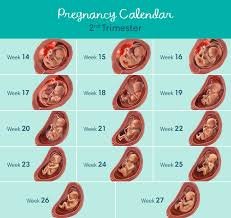
photo credit: Pampers.com
Your baby bump may be very noticeable at this point and you may need some new and more comfortable clothes.
Now is a great time to discuss your delivery options/ birth plan with your Doctor or Midwife, start packing your hospital bag if you haven’t already, and ensure your medical insurance is up to date/ is active when you go into labor.
Third trimester
Weeks 28 to 41, are the final weeks of pregnancy. As your little human continues to grow, the eyes open and close frequently, reacting to filtered light penetrating through your skin. Your belly stretches and grows bigger as your baby continues to increase in size and its physical features become more defined. Some mothers may experience Braxton Hicks Contractions (false labor) during this period.
Your baby’s lungs and kidneys fully develop and prepare for life outside the womb and by week 36, your baby is about 47cm long and weighs approximately 2.5kg, sitting low in the pelvic area with the head facing down. You may experience a lot of discomfort and trouble sleeping. Swollen ankle, skin discoloration, and heartburn amongst others are very common during this time. Your baby’s bones are fully formed and if it's a boy, the testes will drop into the scrotum.
By weeks 37- 42, your baby is fully developed and weighing approximately 3.4kg, covered in a creamy skin protective coating called vernix, and ready to be born.
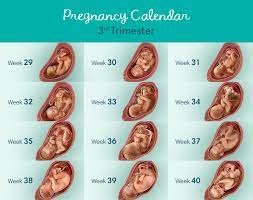
Photo credit: pampers.com
At this stage, you should be prepared to go into labor at any time, and as such your hospital bag and cards/purse should be close by. It is also a great time to put in your notice at work for your maternity leave, and alert your private health insurance provider you are likely to go in at any time. If you have scheduled an elective C-section, your doctor will inform you when to check-in.
Join us on all Social Media channels, moms & midwives app or comment below. We look forward to hearing form you
Other Articles in this Categories
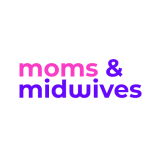
Join The
Squad


Join The Squad
